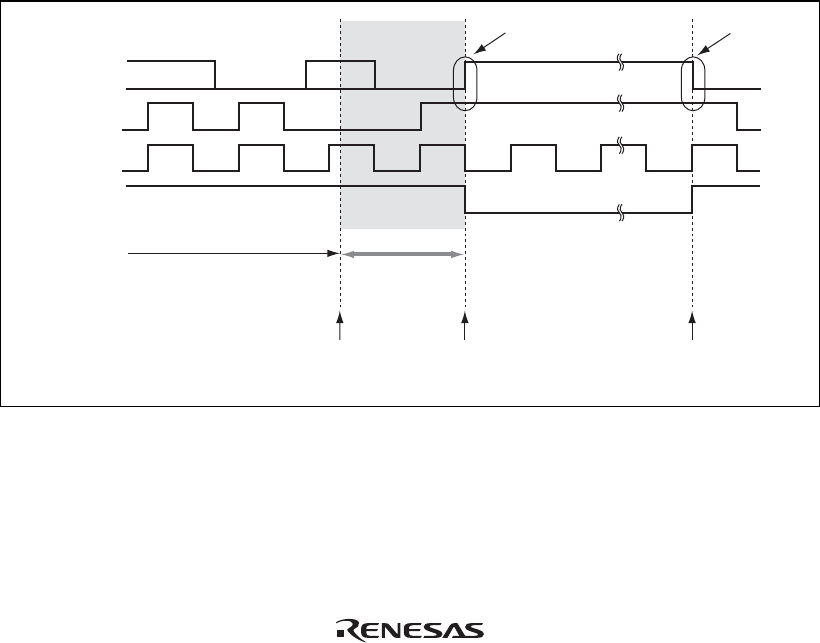
Rev. 1.00, 05/04, page 340 of 544
7. Notes on ICDR read at end of master reception
To halt reception at the end of a receive operation in master receive mode, set the TRS bit to 1
and write 0 to BBSY and SCP in ICCR. This changes SDA from low to high when SCL is
high, and generates the stop condition. After this, receive data can be read by means of an
ICDR read, but if data remains in the buffer the ICDRS receive data will not be transferred to
ICDR (ICDRR), and so it will not be possible to read the second byte of data.
If it is necessary to read the second byte of data, issue the stop condition in master receive
mode (i.e. with the TRS bit cleared to 0). When reading the receive data, first confirm that the
BBSY bit in ICCR is cleared to 0, the stop condition has been generated, and the bus has been
released, then read ICDR with TRS cleared to 0.
Note that if the receive data (ICDR data) is read in the interval between execution of the
instruction for issuance of the stop condition (writing of 0 to BBSY and SCP in ICCR) and the
actual generation of the stop condition, the clock may not be output correctly in subsequent
master transmission.
Clearing of the MST bit after completion of master transmission/reception, or other modifications
of IIC control bits to change the transmit/receive operating mode or settings, must be carried out
during interval (a) in figure 13.29 (after confirming that the BBSY bit in ICCR has been cleared to
0).
SDA
SCL
Internal clock
BBSY bit
Master receive mode
ICDR read
disabled period
Bit 0
A
8
9
Stop condition
(a)
Start condition
Execution of instruction
for issuing stop condition
(write 0 to BBSY and SCP)
Confirmation of stop
condition issuance
(read BBSY = 0)
Start condition
issuance
Figure 13.29 Notes on Reading Master Receive Data
Note: This restriction on usage can be canceled by setting the FNC1 and FNC0 bits to 1 in
ICXR.


















